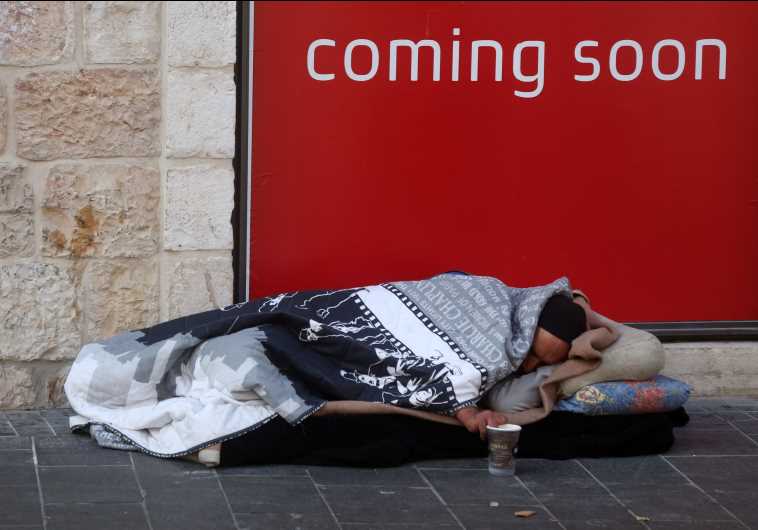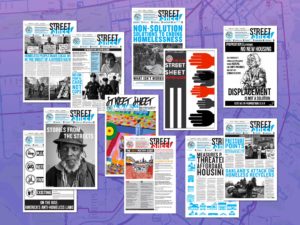
After deciding to write my second article about homelessness around the world and the ways to approach it, I realized how really different homelessness is in various countries and cultures.
Israel didn’t know homeless until late ‘80s and early ‘90s — a time marked by a wave of immigration from the former Soviet Union. From the first days of its existence, Israel was one supportive community that took good care of its members. Nowadays, in a capitalist environment, such a situation is only mentioned with societies in crisis — at war or during catastrophes. Israel was built on the ideas of the Jewish brotherhood, and the country took those ideas as the fundamental principles of its existence.
The first wave of Israeli homelessness of in ‘90s was hardly comparable with situation of US street people. Large part of those who didn’t rent their housing were young squatters living in old — sometimes ancient — abandoned houses. Israel’s Mediterranean climate made such an option comfortable, except for 40 to 60 days in the rainy winter season. Also, the Israeli legal system is pretty tolerant to squatters, unlike the American one: Police really don’t disturb squatters.
Generally, in Israel, it is possible to camp almost everywhere outside of the cities; and what is crucial to understand is that it’s mostly safe. Constant danger of living on the street in the US turns street people’s existence into a nightmare, where life and limb are never safe, not to mention belongings, and normal sleep is beyond their wildest dreams. In contrast, every person sleeping in the streets of Tel-Aviv is hardly in danger and their possessions would be unlikely touched, and even somebody would leave food for the poor person.
Realizing the situation, some hippie-minded immigrants decided that they can save on rent. In one of the popular squatting places, the ancient town of Lifta near Jerusalem, they repaired an ancient aqueduct bringing spring water to some of the houses, so the only 20th century comfort they missed was electricity. They considered the solid, adobe ancient buildings — some of which withstood wartime artillery attacks — to be a much better choice than the government-provided mobile homes known as “caravans.”
From the early ‘90s, the number of Israeli homeless people grew steadily. Currently, estimates of the homeless population vary from 800 to 900, according to the official sources, 2,000 or 3,000 people, according to human rights organizations (Israel’s population is close to nine million). Half of the homeless population are immigrants from the former USSR. Like everywhere in the world, the growing rent becomes a serious burden for those working for the minimal salary, or benefits, but Israel has strong social service and social rehabilitation systems helping those who need to re-enter the job market.
The root causes of homelessness in Israel include addiction, alcoholism and mental health problems, as well as domestic violence. The first wave of hippie-squatters played a bad trick with Israeli homeless creating for many Israelis illusions that homelessness is mostly choice. Starting in 2011, there were several protests to attract public attention to the problem.
Helping those in need is still considered an important value to the average Israeli. Israel is always one of the first nations to offer help for victims of natural disasters, but complicated national politics prevents the Jewish state from being actively involved in humanitarian projects. Every homeless person in Israel is entitled to 1,000 shekels in monthly government assistance, or $283 in U.S. currency. Israeli recipients enjoy more buying power than their U.S. counterparts. Besides that, the Israeli government is making much effort to provide temporary mobile homes and shelters for homeless people.
Living in Israel never was easy — permanent terror threats, racism and complicated relations with neighboring countries define the need for security. Young people are obligated to serve in the military — three years for men, two for women. The way of life in Israel is still largely defined by military conflicts — those of the past and future ones that are always expected to happen, which does not take away people’s ability to smile, create art projects and help each other. One might expect that being constantly prepared for the war will make people in Israel fatalistic and desensitized; on the contrary, average people took the problems of their fellow Jewish people to heart. The heroes of my first story about New Zealand provided effective help to homeless people because of the government social service system. In Israel, it is an extensive national effort that helps people in need.

